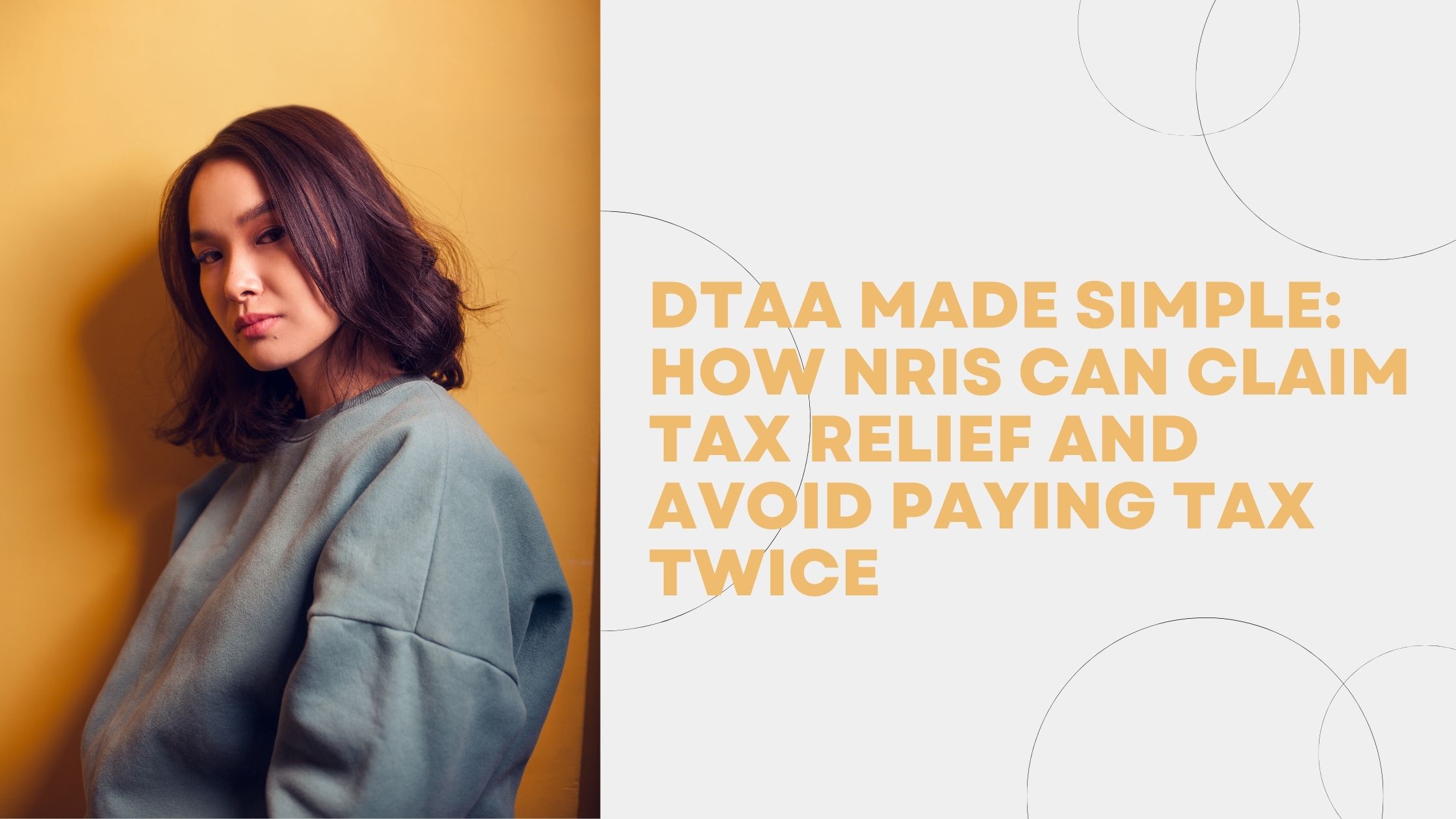DTAA Made Simple: How NRIs Can Claim Tax Relief and Avoid Paying Tax Twice
An individual’s residential status plays a vital role in determining how their income will be taxed in India during a financial year. It’s quite common for Non-Resident Indians (NRIs) and Persons of Indian Origin (PIOs) to carefully plan the number of days they spend in India to avoid dual taxation on their income.
However, in some cases, due to unexpected situations, one’s residential status may change, making the same income taxable in both countries. This often leads to a scenario where the income becomes subject to double taxation.
To address such situations and promote cross-border economic relations, countries enter into Double Tax Avoidance Agreements (DTAA). Let’s understand how DTAA works and how NRIs can benefit from it.
Understanding Residential Status
An individual’s residential classification is based primarily on the number of days spent in India in the current and previous ten years. Broadly, individuals fall into three categories:
- Resident
- Non-Resident (NRI)
- Resident but Not Ordinarily Resident (RNOR)
The scope of taxable income in India changes depending on the person’s residential status.
Example:
If an NRI operates a foreign business from India during their stay, that foreign income may still be taxable in India—even if the individual qualifies as RNOR for that year.
Key DTAA Benefits for NRIs
1. Income Exemption from Tax in India
Under DTAA, certain types of income earned in the NRI’s country of residence may be exempt from tax in India, depending on the agreement between the two countries. Commonly exempt incomes include:
- Salary earned abroad
- Interest from NRE or FCNR accounts
- Dividends from foreign investments
- Pension received from overseas sources
2. Tax Credit for Taxes Paid in Another Country
If an NRI has paid tax in their country of residence, they can claim a tax credit in India. This helps reduce the Indian tax liability on the same income.
- The tax credit is limited to the Indian tax payable on that income.
- It ensures the NRI doesn’t pay tax twice on the same earnings.
Example:
If ₹50,000 was paid as tax overseas and the Indian tax on that same income is ₹60,000, the individual can claim a ₹50,000 credit and only pay ₹10,000 in India.
3. Lower Tax Rates on Specific Income
DTAAs often specify reduced tax rates for certain income categories, which can be lower than India’s standard rates. These include:
- Royalty payments – may be taxed at 10%
- Interest income – such as from bonds or loans
- Dividends – usually taxed at concessional rates
Example:
Under the India–USA DTAA, interest on loans is taxed at 15% in India instead of the typical 30% rate.
DTAA Rates
The Double Taxation Avoidance Agreement (DTAA) outlines the specific tax rates at which income earned by a resident of one country and sourced from another must be taxed. For instance, if an NRI earns income from India, the Tax Deducted at Source (TDS) on that income will be calculated based on the rates mentioned in the DTAA between India and the NRI’s country of residence.
DTAA rates vary from country to country, but generally fall within the range of 7.5% to 15%, depending on the nature of the income and the specific treaty.
Income Types Covered Under DTAA
The DTAA ensures that NRIs do not pay tax twice on the same income. Income types typically covered include:
- Salary earned in India
- Rental income from house property in India
- Capital gains from assets located in India
- Interest earned on fixed deposits in Indian banks
- Interest on savings accounts in India
If you’re an NRI and are unable to claim DTAA benefits or are unsure how to proceed, it’s important to consult tax professionals. The team of expert eCAs at Tax2Win can help you with accurate income tax filing and ensure you get the maximum benefits while staying compliant with tax regulations. Reach out to our experts and let us simplify your tax journey.
Frequently Asked Questions (FAQs) – DTAA for NRIs
Q1. On which types of income can an NRI claim tax credit or exemption under DTAA?
Income types eligible for tax credit or exemption are outlined in the specific DTAA between India and the NRI’s country of residence. Common income sources include salary, interest, dividends, capital gains, and pension. However, the actual applicability depends on the terms of the bilateral agreement.
Q2. What are the methods used to avoid double taxation?
There are three standard mechanisms:
- Deduction Method: Foreign taxes paid are deducted from total taxable income.
- Exemption Method: Income is taxed in one country and exempt in the other.
- Tax Credit Method: The home country allows credit for taxes paid abroad against local tax liability.
Q3. Are there any conditions to avail DTAA benefits?
Yes, NRIs must fulfill certain requirements such as:
- Being a tax resident of a country with which India has a DTAA.
- Furnishing a valid Tax Residency Certificate (TRC).
- Submitting Form 10F and self-declaration.
- Meeting any additional criteria as per the specific treaty clauses.
Q4. Who can benefit from DTAA?
DTAA applies to individuals and businesses that earn cross-border income. It ensures they are not taxed twice on the same income in both countries, promoting fair taxation and global investment.
Q5. How can I claim DTAA benefits in India?
To claim benefits:
- Submit a Tax Residency Certificate (TRC) issued by your country of residence.
- Fill and submit Form 10F and a declaration stating you are eligible.
- Declare your income and DTAA claim in your Indian Income Tax Return.
Q6. Is DTAA applicable only to NRIs?
No, DTAA applies to any taxpayer (individual or entity) earning income in a country other than their country of residence, provided a DTAA exists between the two nations.
Q7. How can I check if India has a DTAA with my country?
You can refer to the list published by the Income Tax Department of India on its official website, which includes the full list of countries with which India has signed DTAAs.
Q8. Does DTAA also reduce TDS rates?
Yes, DTAAs often specify lower TDS rates on certain income types such as interest, dividends, royalties, and fees for technical services. This helps NRIs avoid high TDS deductions on their Indian income.
Q9. Can DTAA benefits be claimed retrospectively?
Generally, DTAA benefits must be claimed in the same financial year in which income is earned. However, if you missed claiming it, you may revise your tax return or apply for a refund under certain conditions.



